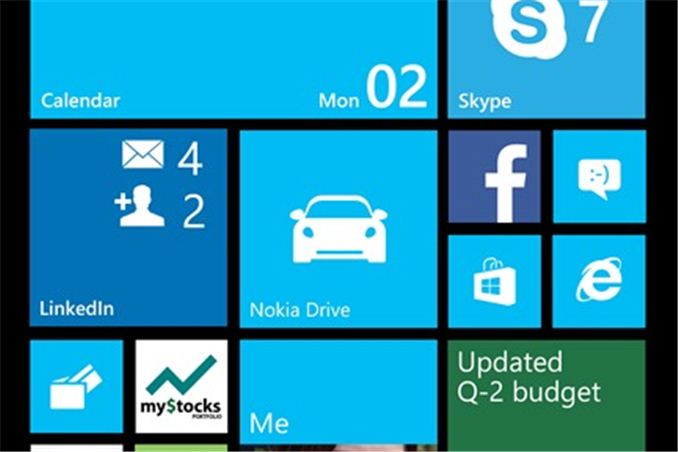Windows Phone 8 GDR3 Update Breakdown
by Joshua Ho on October 15, 2013 3:05 AM EST- Posted in
- Microsoft
- 1080p
- windows phone 8
- Snapdragon 800
- GDR3

Today, Microsoft announced the third developer update to Windows Phone 8, which brings support for larger screens, and 1080p display resolution. This also means a larger start screen, going from 4 to 6 live tiles of horizontal space (on larger screens), but otherwise maintaining similar start screen design. GDR3 also brings support for the 8x74 SoCs, better known as Snapdragon 800.
There are also some other usability features added to the phone, such as driving mode, which disables many types of notifications and turns on an auto-respond feature to prevent distractions. It seems to work automatically based upon a paired Bluetooth device that is remembered.
Accessibility is also improved, with a screen reader similar to Talkback on Android. The internet sharing feature finally brings Bluetooth tethering. Other feature additions include custom ringtones for more items like IMs, and personalized call/text ringtones based upon contacts, autorotation lock, native management of the “Other storage” files and better file management in general, a tap to close application function similar to iOS 7, WebOS, and Android 4.x, although differing in UI implementation, immediate WiFi connection setup on first start, and general improvements to the Bluetooth stack.
While many features have been implemented in this update, many such features have been significantly delayed in implementation when compared to Android or iOS. While iOS seems to be staying in the 300 PPI range for mobile displays, Android is in a race to ever greater resolutions, as seen by the rapid spread of 400+PPI displays. Windows Phone seems to be stuck in the middle of this because while it may make sense to stick with ~300 PPI from a battery life perspective, due to the approximate 20% jump in power draw on the display from the increased backlight requirements, it seems that Windows Phone is mostly compared against Android devices, not iOS. This also seems to make things more difficult for Microsoft, as the update cadence simply doesn’t stack up when compared to the rate at which Google iterates Android, and the design of the OS is simply not well suited to widely varying screen sizes and pixel densities, a trait shared by iOS, but not by Android, which has proven to be extremely important as displays have taken five notable jumps in resolution in the past four years, with a huge number of variations when it comes to screen size. It remains to be seen whether Microsoft will amp up the pace when it comes to the Windows Phone update cycle, specifically in the areas of SoC support, resolution/DPI support, and general UI additions, but for now, this update seems to be a continuation of previous strategies and with little change in the execution of said strategies.
Source: Microsoft










44 Comments
View All Comments
newBgeek - Saturday, November 2, 2013 - link
While I agree that user experience should be the primary objective, they really need to step up their game. They have been chasing iOS for too long when the real target should be Android. Even iOS is moving more towards the Android experience. At the very least, Microsoft needs to allow different browser engines on Windows phone like Firefox and Opera.aerize - Monday, November 4, 2013 - link
Check out our free apps for GDR3, <a href="http://www.windowsphone.com/s?appid=a91fb0c3-9860-... Rotation Lock</a> and <a href="http://www.windowsphone.com/s?appid=5e7b504c-ea98-... Battery Saver</a>. Very simple apps, but they really make Windows Phone 8 a tad bit easier.aerize - Monday, November 4, 2013 - link
The links should be:Rotation Lock: http://www.windowsphone.com/s?appid=a91fb0c3-9860-...
and
Battery Saver: http://www.windowsphone.com/s?appid=5e7b504c-ea98-...
fedelst - Monday, December 2, 2013 - link
I love the idea of driving mode, but I hope this is not an excuse for not fixing the problems in the Nokia 1020 with Bluetooth radio persistence when in sleep. Presently, the 1020 can not be used reliably with in car Bluetooth audio devices as the Bluetooth radio shuts down the moment the screen goes into sleep mode, making the device useless with in car systems.The fix is a simple parameter setting, but unfortunately, it is not user accessible.